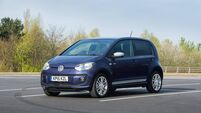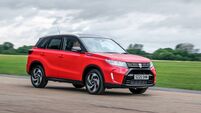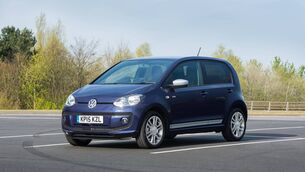Cupra Terramar VZ review: A sleek hybrid SUV ready to rival the Tiguan and RAV4

Cupra Terramar VZ PHEV
|
CUPRA TERRAMAR VZ |
|
|---|---|
|
|
★★★★☆ |
|
|
from €46,500 - €56,746 as tested |
|
|
a 1.5 litre TSi engine mated with an 85-kW electric motor |
|
|
quite a few add-ons on the tester – hence the price |
|
|
hugely credible contender in the crowded mid-size SUV segment |
Here at Examiner Motoring in the last while we have been banging on extensively about Cupra.
“Cup what?” is the response from most people, and, to be honest, it’s been a pain in the ass to answer the most commonly asked question that comes our way: “What are you driving this week?”
Especially when the answer is: “A Cupra.”
Despite the fact the nameplate has been around for some time now (Cupra has been with us since 2018 as a standalone brand and they’ve sold over 650,000 of them across Europe), Irish people seem to be distinctly unaware of anything about it and, frankly, it’s beginning to feel like I’m a one-man marketing campaign.
To be fair, the company’s arm here in Ireland – Cupra is a sub-brand of SEAT and owned by Volkswagen – they seem to have put a bit of a push on lately to get some attention and that’s why we’ve tested so many of them this year alone. We’re doing our best to help.
This week we test the Cupra Terramar VZ PHEV, the company’s latest entry into the mid-sized SUV market and which is based on the same VW Group platform as the VW Tiguan and Cupra’s own Formentor.
In a fiercely competitive market segment, this is a car aimed at propelling Cupra sales to new and unprecedented heights, but here in Ireland, the distributors are going to have to start throwing some serious gelt into a marketing campaign to broadcast the news that a), it actually exists; and b) it’s a rather good product and not at all the niche thing people might think it to be.
Cupra has actually laid a lot of store on its EV products – the Born and the Tavascan, as well as the forthcoming Raval – but it does make cars across a variety of drivetrains including MHEV, petrol and PHEV. The Terramar is offered with all three.
Essentially, while the company does view EVs as its future, like most other companies, it has come to the broad realisation that many people are not yet ready – or willing – to become adopters. Consequently, the Terramar is supposed to be one of those transitional cars which will ease the public towards an electric future.
It will eventually replace one of those cars which as a joint Cupra and SEAT identity – the Ateca; to that end it has some pretty heavy lifting to do, taking on such big sellers here such as the Toyota RAV4 and the Hyundai Tuscon, not to mention its near sibling, the VW Tiguan.
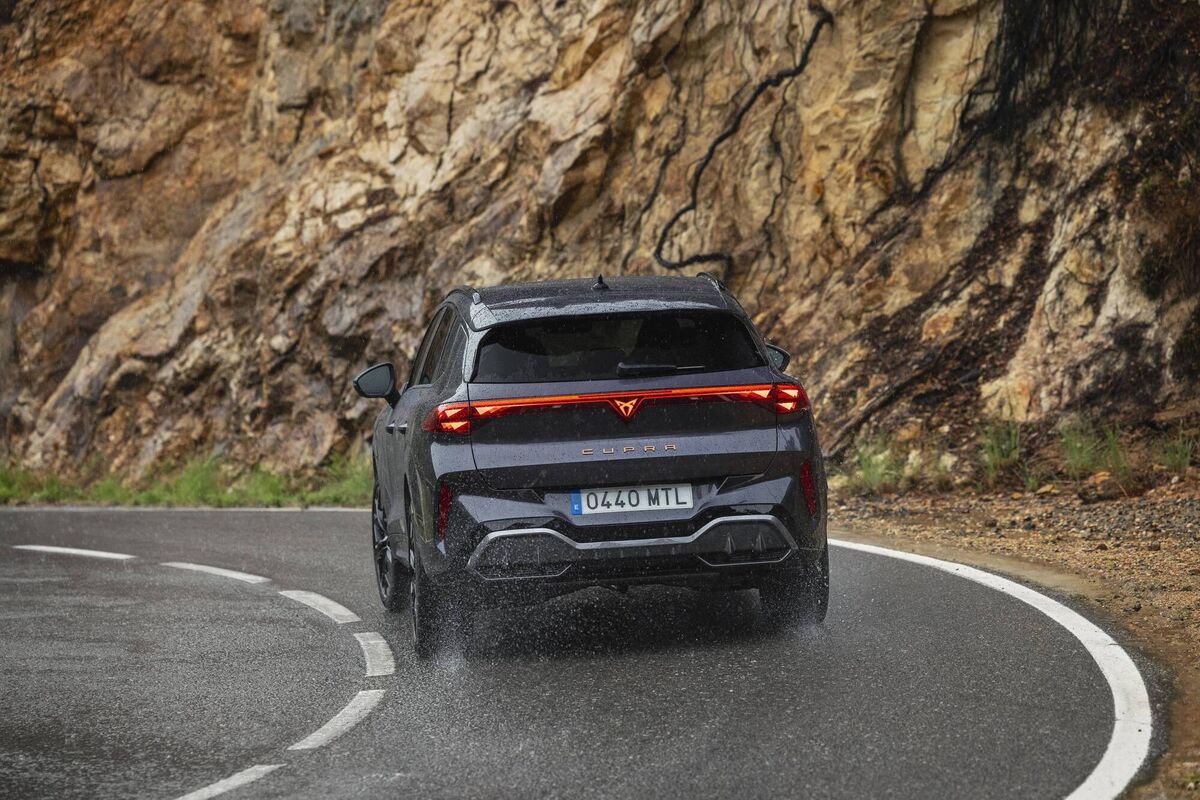
The Cupra adventure has been something of a novelty, but if there was one broad criticism to be thrown at the company, it is that there has been a bit of over-egging the pudding by producing a somewhat confusing model line-up filled largely with similar-sized SUVs.
There is the Arona, the Tavascan, the Formentor and now the Terramar. Sure, the Formentor is bigger than the rest of them, but the other three all seem, remarkably, to be fighting for the same space. It seems that sensory overload is also part of the Cupra grand plan.
To add further confusion, the company has, like so many others, reacted quickly to the public’s cooling off on EVs and now most models come with MHEV, PHEV and petrol variants – apart of course from the excellent Born, which remains resolutely electric, and the coupe-esque Tavascan.
But I digress. The Terramar, like most of its siblings, is a fine-looking thing and does stand out from the pack. A mixture of busy lines – front, rear and sides – along with very fancy ‘Matrix LED Ultra’ headlights (with their three-point triangular light points), the ‘four-legged spider’ badging and the copper inserts all over the interior and the alloys.
There are five powertrains offered – two PHEVs, one MHEV and two petrols – and it was the more powerful of the former that we tested. This petrol/electric mix produces some 268 bhp (200 kW); it utilises a 1.5-litre petrol engine paired with an electric motor fed by a 19.7 kWh battery. Power is transmitted to the front wheels through a six-speed DSG gearbox.
The 0-100 km/h time is an earthy 7.3 seconds, and top speed is 215 km/h, so it’s not lacking in punch; there is also an EV-only range of 112 km, which is well on the right side of useful. The claimed 0.4/0.5 l/100 km (700 mpg) fuel consumption is, of course, preposterous, but you can reasonably expect to get close to 4.9 l/100 km (57.1 mpg) without sweating it.
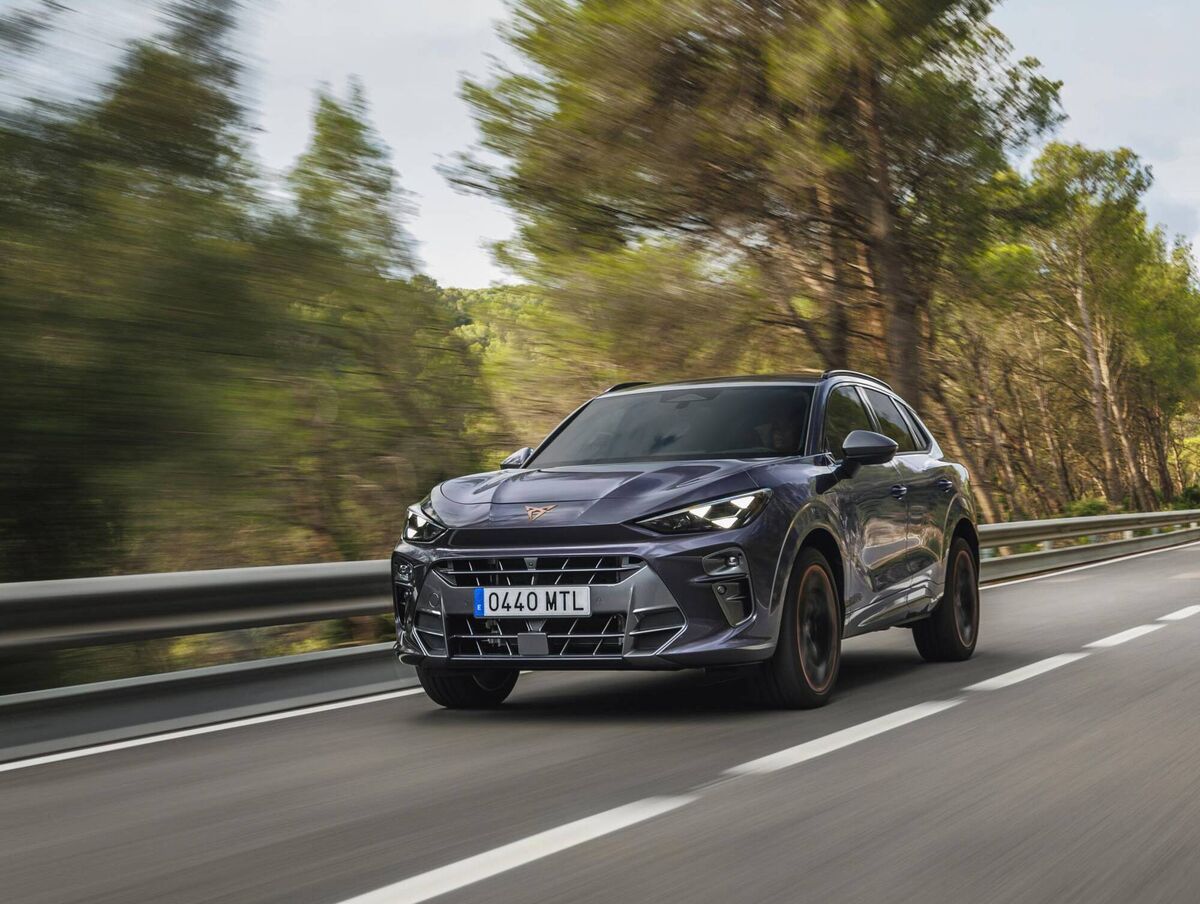
As a front-driver, you will get a smidge of torque steer when you stamp on the loud pedal, but otherwise, this is a very well-sorted handler. Sports suspension might not be everyone’s cup of macchiato, but in this case, the 10 mm lower set-up dials out body roll and the front MacPherson struts and rear multilink set up make for a supple ride and spot-on handling.
Six-piston Akebono brakes are an advised option and work really well in tandem with two-valve shocks to give an assured feeling when you’re kicking ass. This hybrid is heavy, though, and that becomes more noticeable the more you press on as the steering is ever so slightly vague.
Compared to, say, the Tavascan, the Terramar’s interior is slightly old-school (no swooping centre console struts here), but it is very well put together, and the overall vibe is classy. The infotainment system is excellent, and the optional Sennheiser sound system is fantastic.
Like many cars in the segment, rear legroom is a little tight, and the boot space (400-490 litres) is compromised a bit by all the hybrid baggage you have to carry around.
All told, then the Terramar is possibly the least exciting of all the Cupra models we’ve recently tried. Given that the company’s stated intent is to offer a product which is both different and infused with what might be called Cupra’s ‘enthusiastic DNA,’ this seems a touch off-message.
Oddly, however, that might make it appeal to a broader audience than some of its fellows, particularly so for the excellent ride and handling, extensive technology and its frugality.
Even though so many folk profess to know nothing about Cupra, the brand is slowly but surely gaining traction. Its very distinctive styling and premium build quality are very evident here as with other models, but just not as much in your face.
That it is competitively priced and not thrown in among the premium sharks will further enhance its potential popularity. But the basic advice here is that if you’ve not heard of the brand, then the Terramar is a really good place to start looking. You will be very pleasantly surprised.

